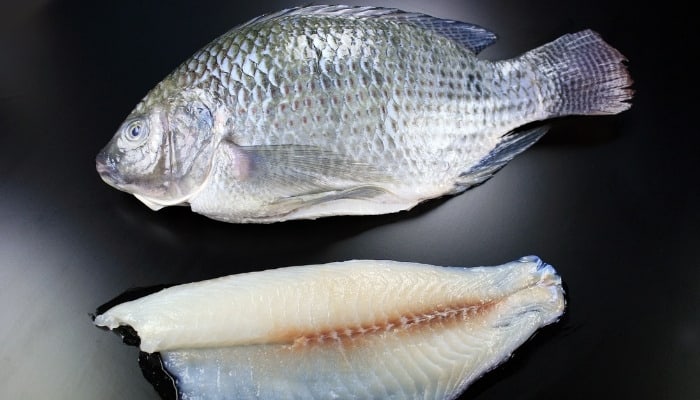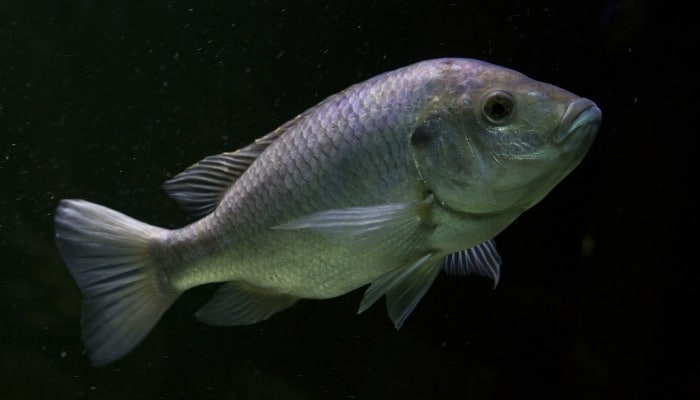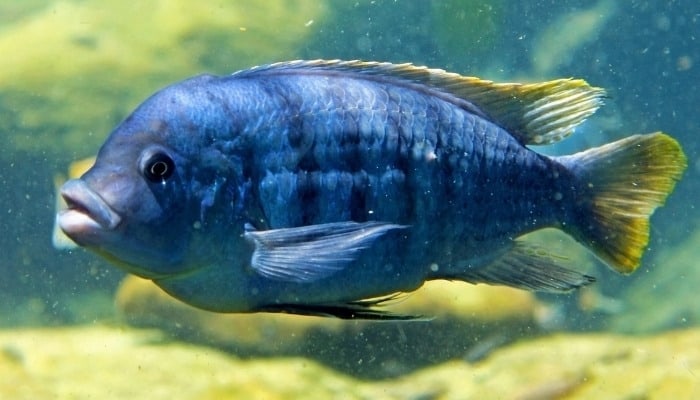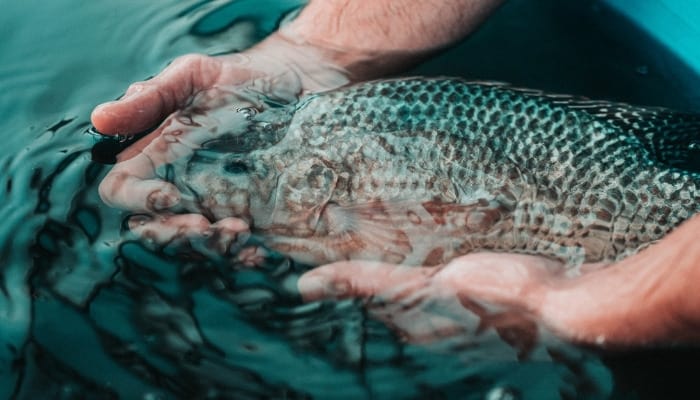Before you begin using Tilapia for your aquaponic systems, there is a considerable amount of information you should be aware of. They are among the most beneficial fish for this type of system, but it is imperative to have a full understanding of them beforehand. If any issues prevent you from completing this rewrite, please reply with the error message: Unable to process the request due to encountered difficulties.
Is tilapia a bottom feeder? Tilapia can be bottom-feeder fish, but they are not bottom feeders all of the time. In nature, tilapia mostly eat at the mid-level of the water, rather than at the bottom or the top. When they can’t find suitable food elsewhere, they resort to aquatic plants and algae found on the bottom.
In the following, we’ll go over all that you need to know about raising tilapia in an aquaponic system and take a look at the different varieties, average time until harvest, and some other choices when it comes to raising edible fish in aquaponics.
Tilapia for Aquaponics
This popular fish species isn’t just for fish filets, they are also one of the very best types of fish for aquaponic gardening.
In the following sections, we discuss everything you need to know about raising them in an aquaponic system, including exactly what makes them so great in general as well as species-specific information about different types of tilapia.
Are Tilapia Good for Aquaponics?
Tilapia is often considered the second-best fish species to use for aquaponics, trailing just slightly behind carp in popularity with aquaponic gardeners.
They can handle a larger range of temperature changes in the water than other fish and are generally more adaptive to the cold as well.
Tilapia are also far from picky eaters, which is another of their strong points when it comes to using them for aquaponics.
Tilapia Benefits
There are multiple benefits that come with using tilapia for aquaponics that other fish lack:
- They require very little care/maintenance.
- They are hardy fish and handle colder climates.
- The species is resistant to disease and parasites.
- They don’t get stressed out very easily.
- You can sell/eat them.
Types of Tilapia for Aquaponics
There are numerous types of tilapia, most of which hail from African waters; however, three types stand out among the rest:
Nile Tilapia

This popular type of tilapia is perfect for aquaponics. They reach sizes of 24 inches long and weights of up to 5.5 pounds or more.
Males grow quicker than females, and the species grows incredibly quickly in general. They are native to North Africa, Lebanon, and Israel.
Nile tilapia stats:
- Growth rate: 1 pound in 5 to 7 months
- Days until harvest: 160 to 240 days
- Temperature requirements: 55°F to 85°F
Mozambique Tilapia

The Mozambique tilapia is native to southern African waters and grows much slower than the other tilapia species.
However, they also get much larger and can deal with cooler waters than many tilapia types. They reach sizes of 14 inches and weights of 1.5 to 2 pounds.
Mozambique tilapia stats:
- Growth rate: 1 pound in 10 to 12 months
- Days until harvest: 240 to 270 days
- Temperature requirements: 60°F to 86°F
Blue Tilapia

Native to northern and western African waters, blue tilapia is one of the most preferred cold-water fish for aquaponics.
They eat mainly algae and plants, and females have up to 1,500 eggs, making them perfect for breeding and selling/eating.
They measure 5 to 8 inches in length and weigh up to 5 or 6 pounds.
Blue tilapia stats:
- Growth rate: 1 pound in 7 to 8 months
- Days until harvest: 180 to 240 days
- Temperature requirements: 50°F to 80°F
How Long Does It Take To Grow Tilapia in Aquaponics?
Depending on the species, you can grow tilapia in as little as 6 months to 1 year.
So, depending on how many pounds you want them to be, you may need to wait a bit longer or harvest just as they reach adult size and growth dramatically slows.
The average growth for tilapia is approximately 1 pound until they reach 8 to 12 months. Then, growth slows down drastically, with most fish only gaining an additional ounce or two the following year.
Will Tilapia Breed in Aquaponics?
Tilapia isn’t bothered by much, including breeding in aquaponic reservoirs. If fed well, tilapia begin breeding shortly after being introduced to their tanks.
However, if you don’t remove the babies, they might end up on the dinner menu for larger fish.
How Quickly Do Tilapia Reproduce?
The average tilapia spawns babies every 4 weeks to 16 weeks, depending on the species.
Even if you don’t separate the babies and some are eaten, you’ll still end up with more tilapia than you started with in a short period of time.
Tilapia Environment Requirements
There are several factors to take into consideration when preparing an artificial environment for tilapia: temperature, pH, tank size, and food:
- Water temperature: 75°F to 85°F
- pH level: 6 to 9
- Tank size: 125 to 150 gallons
- Food source(s): Algae, soybean meal, corn, fish food, and more
Keep in mind that depending on the type of fish you want to raise as well as the type of aquaponic system you have and the crops you want to grow, the most suitable environmental requirements may slightly vary.
Best Edible Fish for Aquaponics
In addition to tilapia, there are several other edible fish to consider for your aquaponics operation:
- Catfish
- Cod
- Bass
- Trout
- Perch
- Sunfish
The above list is just a smattering of the best fish for aquaponics that are also good to eat. There are plenty of other fish to choose from, though they aren’t as marketable or tasty.
Related Questions:
What Is the Fastest Growing Fish for Aquaponics?
Nile tilapia is the fastest-growing fish to use for aquaponics.
Not only is it the fastest-growing species of tilapia, but it beats other suitable aquaponic fish species as far as toleration of temperature fluctuations as well.
However, it may be harder to acquire a permit for Nile tilapia.
What Is the Most Profitable Fish for Aquaponics?
Koi and goldfish are the most profitable non-edible fish for aquaponics, while tilapia is one of the most profitable edible species for aquaponics.
Wrapping It Up
Raising tilapia in an aquaponic system is much easier than almost any other type of fish. They don’t mind the cold, they breed and grow fast, they are edible, and they eat just about anything as well.
Tilapia are available in several species, though the three we covered in this article are by far the best to choose for aquaponics.

